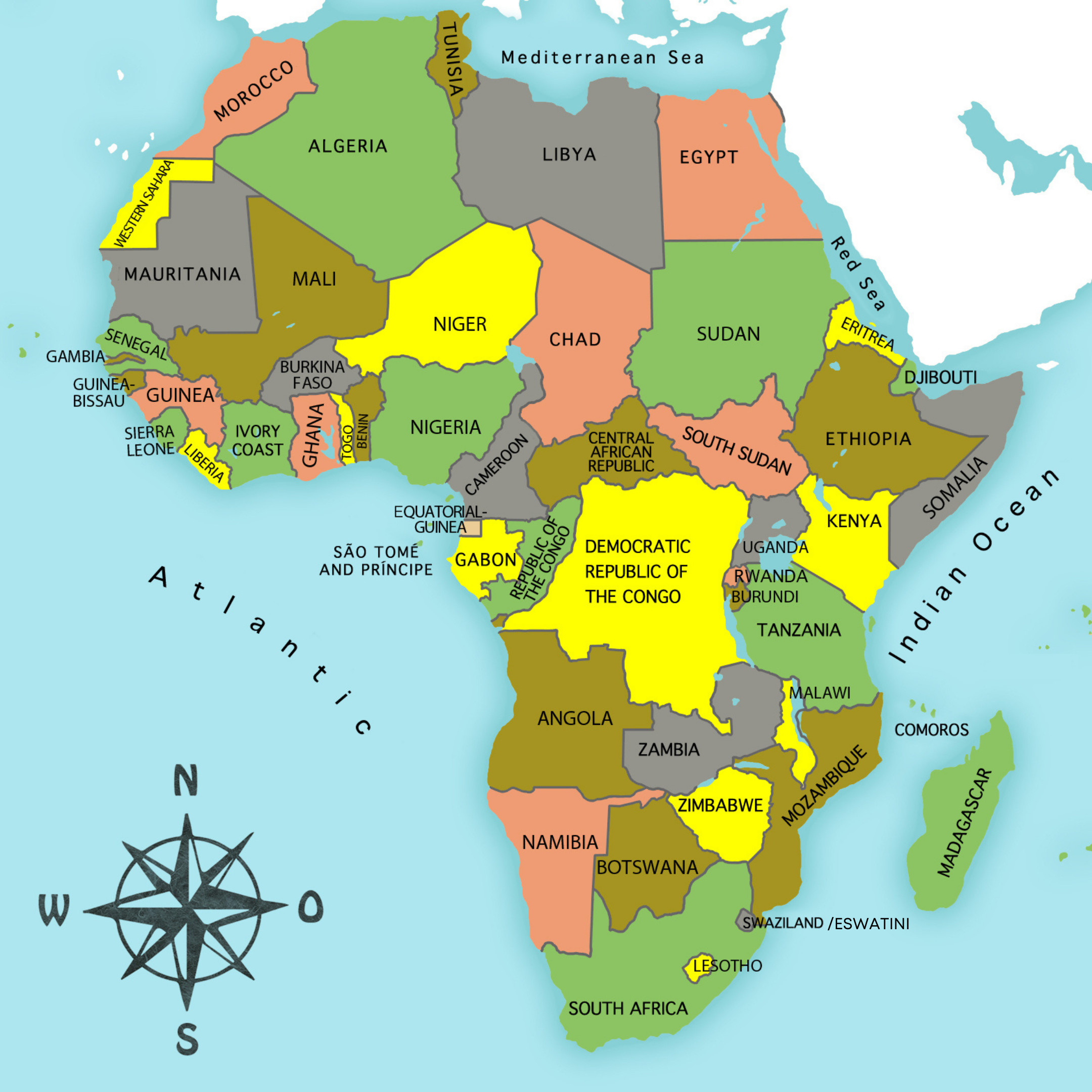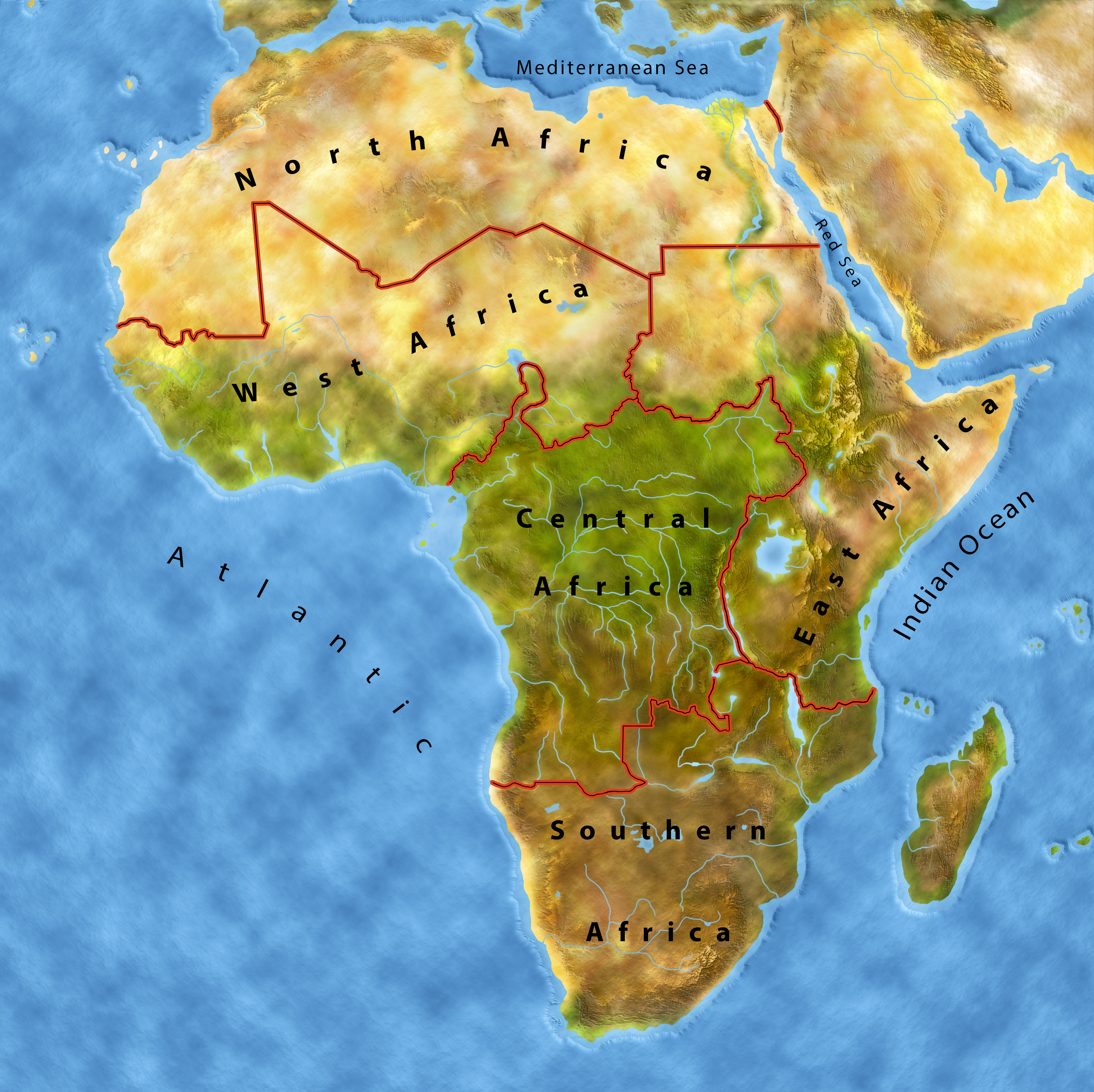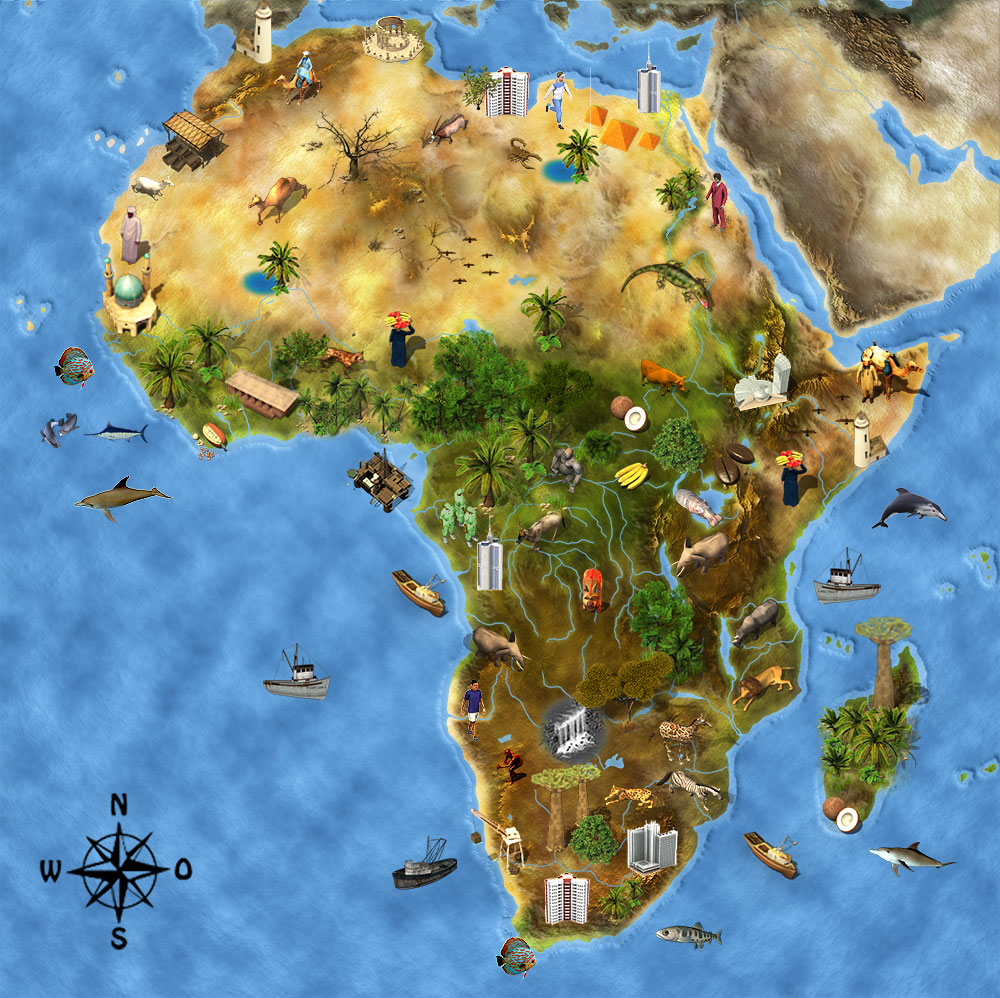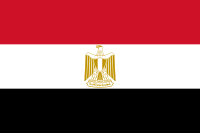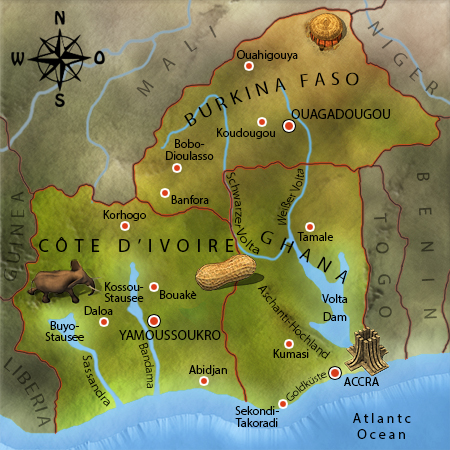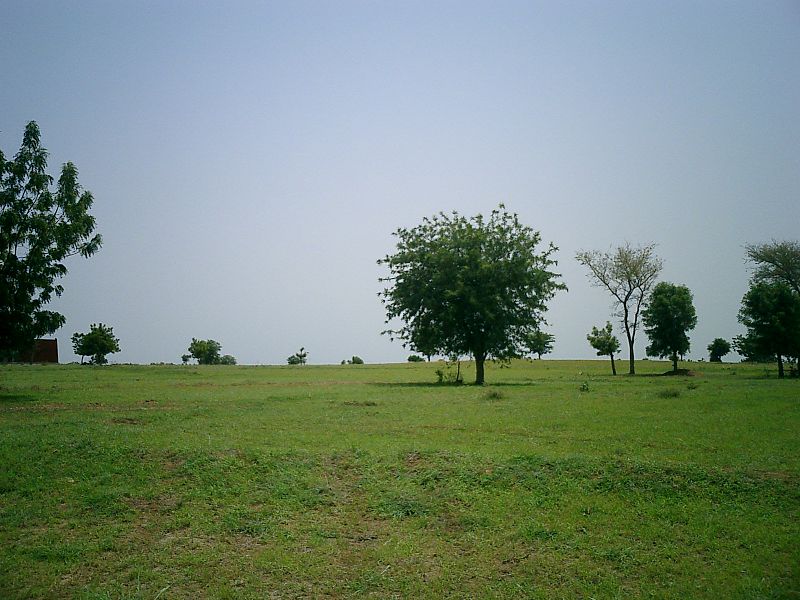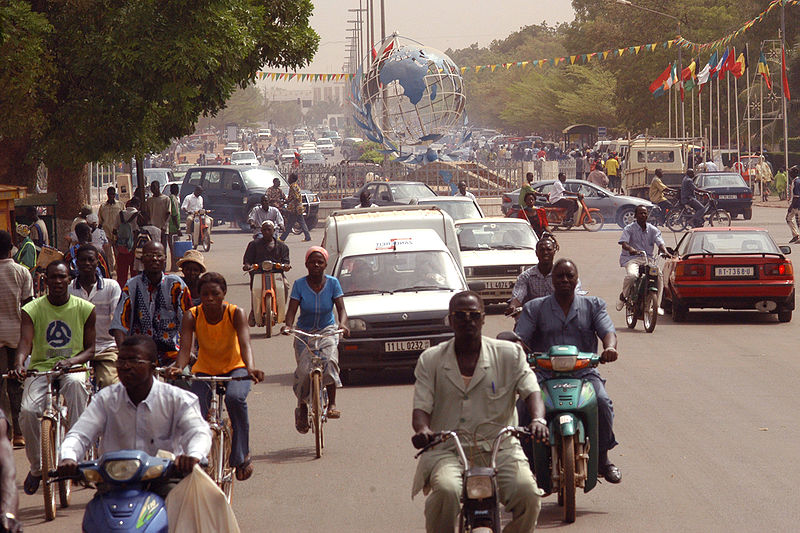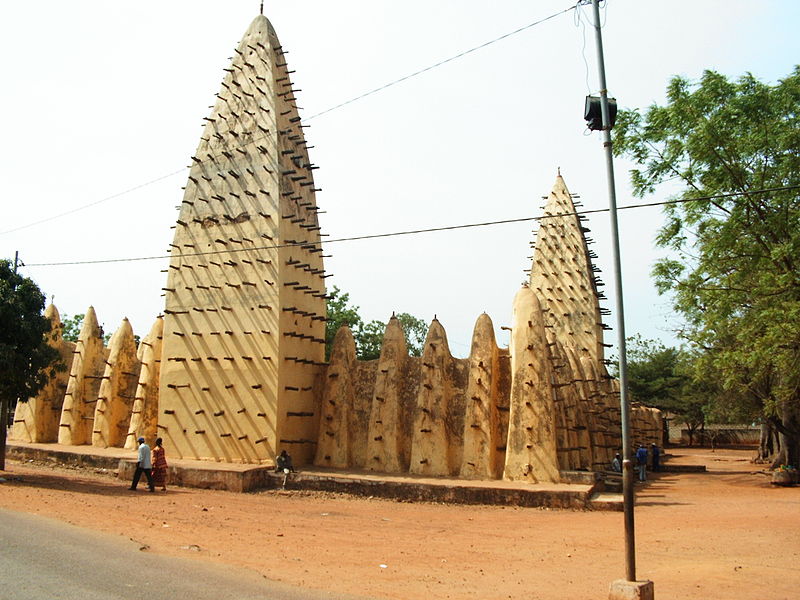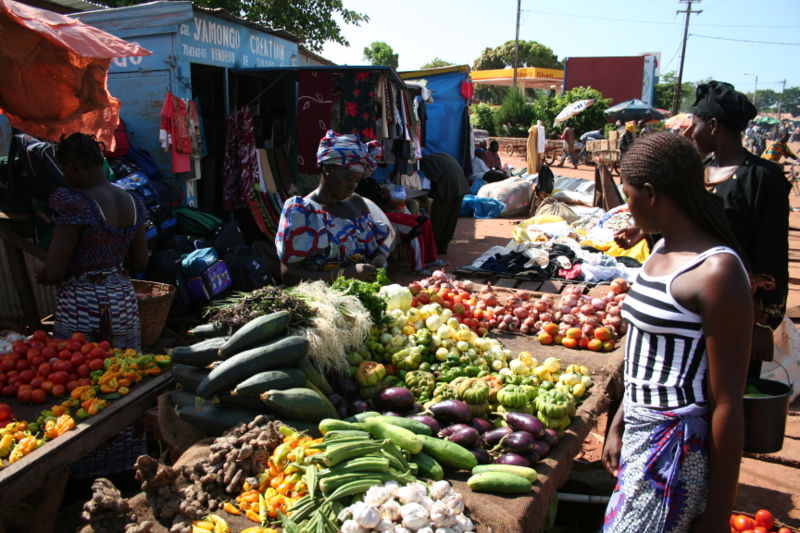Bonjour, welcome to Burkina Faso, the “fatherland of the honest people”!
Burkina Faso is a small state in West Africa with many different peoples and cultures. The country is famous for its colourful markets and its fascinating traditions.

Burkina Faso is a landlocked country. It is part of the dry Sahel belt. The Niger flows around the country, but never touches it. The Niger is the most important trade route to the neighboring countries. Like most midlands Burkina Faso has many neighbors: Mali, Niger, Benin, Togo, Ghana and the Ivory Coast.
Landscapes
Burkina Faso is located on the so-called Upper Guinea Threshold, a wavy high plateau. The northern part of the country is characterized by the dry Sahel. During the dry season not a single drop of rain falls here – even the rivers dry out. The hot desert wind, named Harmattan, blows the sand of the Sahara Desert towards the south. Precious farmland is turned into desert every year because of this. As you can see on the map, there aren’t many cities in Burkina Faso’s north.

The south is populated a little more densely. This is where the Sahel transforms into a savannah. All the way in the south, woodlands can be found. More rain falls in this area, making the ground more fertile than in the north. The dry season means a lack of water here as well. The only time period where it rains and where the temperatures are moderate are from June until October.
The Volta River
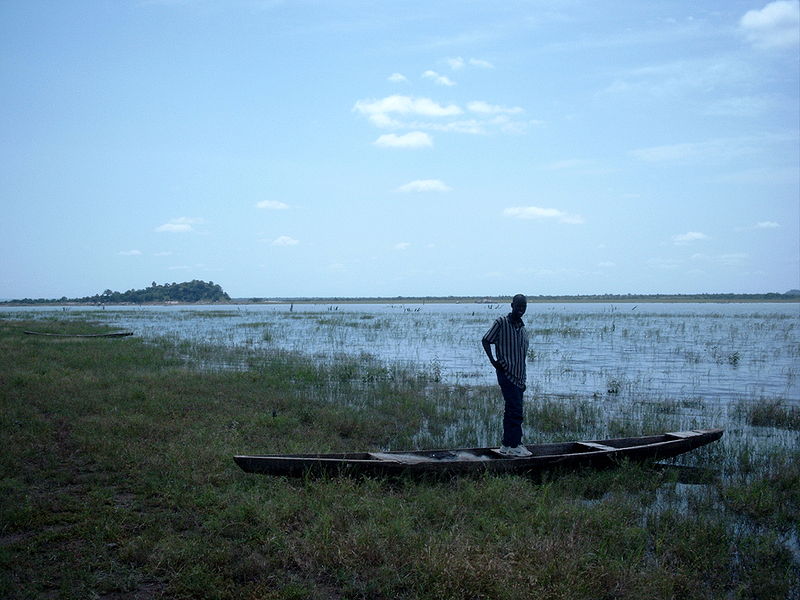 In former times, the country used to be called Upper Volta, since the three swelling rivers of the Volta begin here: The Black Volta, the White Volta and the Red Volta. After their journey through Ghana they join forces to become the Volta and finally empty into the Atlantic.
In former times, the country used to be called Upper Volta, since the three swelling rivers of the Volta begin here: The Black Volta, the White Volta and the Red Volta. After their journey through Ghana they join forces to become the Volta and finally empty into the Atlantic.
Burkina Faso’s Capital
Ouagadougou is the capital of Burkina Faso and is located in the middle of the country. It looks like a large village and originally consisted of seven villages. Only the modern city center offers insight into the influence of the former colonial power France. The city fathers want to turn Ouagadougou into a metropolis. Ouagadougou currently has around 1.5 million inhabitants but young people are constantly moving here on the lookout for well-paying jobs. Ouagadougou offers interesting museums like the museum for ethnology that has artefacts from the Mossi culture. Shopping on the Marché Rood-Woko is an experience, since it is the largest market in West Africa. Everything that West Africa has to offer, from fruits, to animals and fish can be bought here. Furthermore, you will find an array of colorful jewelry, magnificent dresses and impressing artwork on the market as well. The palace of the MoghoNabam, the emperor of the Mossi, is worth a visit as well. He still resides in Ouagadougou today but has no actual power.
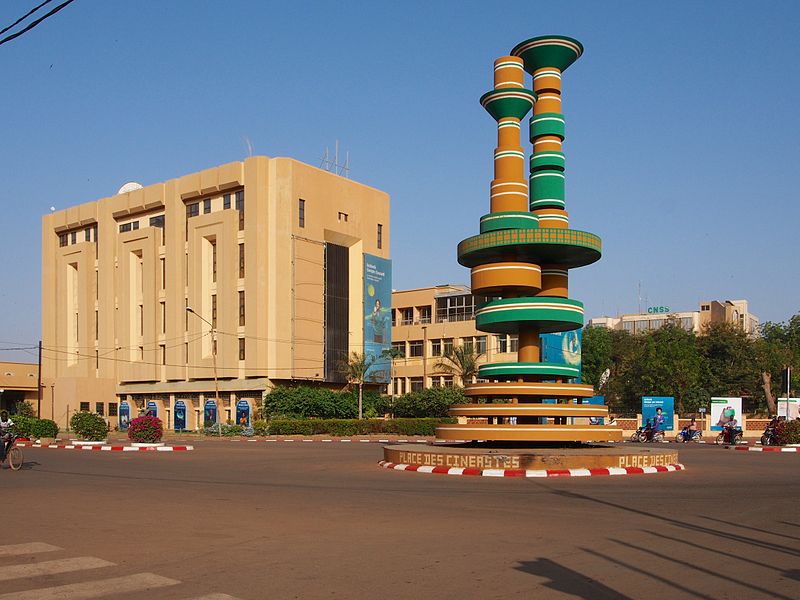
Ouagadougou is the city of modern story tellers. Every year a theater festival takes place here and every other year people from Africa’s film-business meet here for the film festival “FESPACO”. For a brief time period every year, the city belongs to the stars and starlets of Africa. Ouagadougou even constructed a monument in honor of the film-makers, the “Monument des Cinéastes”. It consists of tripods, camera objectives and other objects that are needed to make movies.
Peoples and Languages
Many different peoples live together peacefully in Burkina Faso, such as the Mossi, Bobo, Peulhs and Tuareg. They preserve their old traditions and shape the colorful culture of the country. Many people tend to craftsmanship and traditional and modern music. The most important group are the Mossi, who have settled around the capital Ouagadougou. The official language is French, but most inhabitants speak their African languages, including More, the language of the Mossi, and Dioula. From words of these two languages the name Burkina Faso comes from: Burkina means in More language "men of inegrity" and Faso means in Dioula language "fatherland"
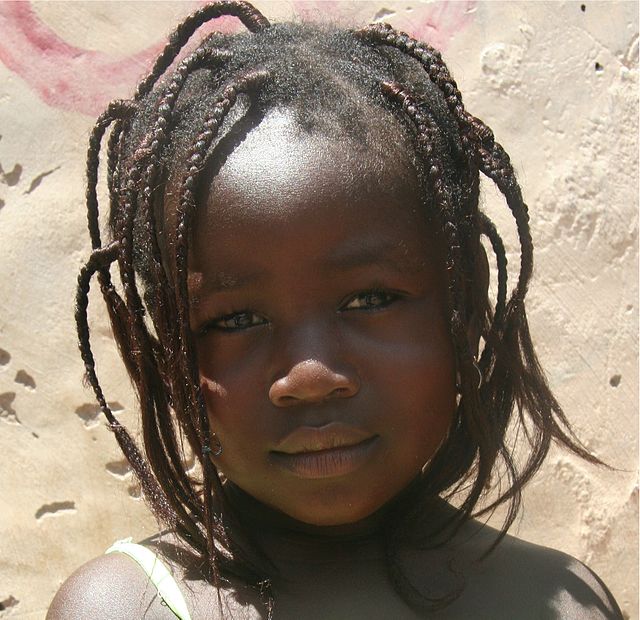
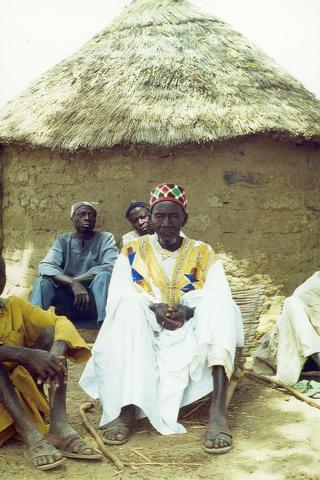
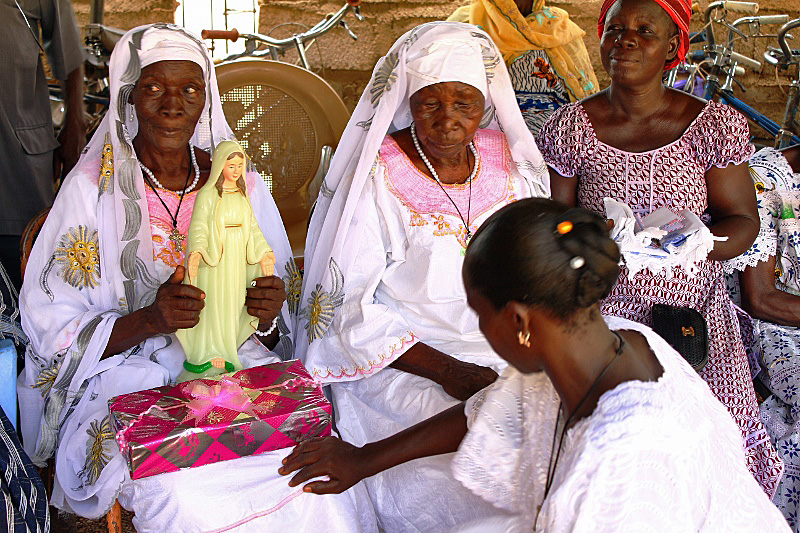
The Burkinabe are very tolerant when it comes to religion. About half the population is Muslim, while the other half tends to their traditional African beliefs. There are no disputes about religion, unlike in other countries in the Sahel. In Burkina Faso, equal rights for women are imbedded in the constitution. In reality, women are disadvantaged though. It is very hard for women to better their situation, because most of them cannot read or write.
Village Life with the Mossi
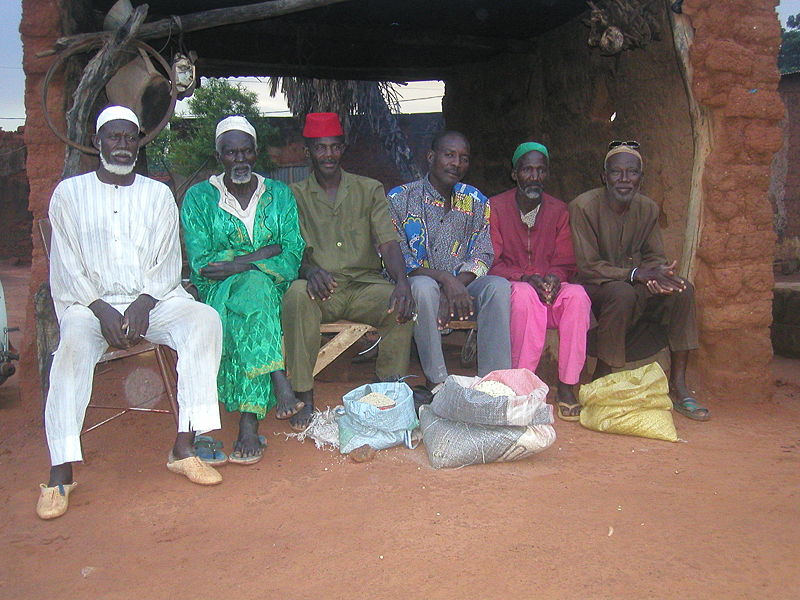 Mossi-families live in mud huts that are arranged in a circle. On the inside of the courtyard is a rectangular building in which the head of the family lives. A man is married to several women. Each wife has her own hut in which she lives with her children. Fights between the wives can be avoided like this. Once the children get older, they are assigned their own hut until they marry. The villages of the Mossi are ruled by a village chief. The chief is in charge of marriages, taking care of disputes, ceremonies and sacrificial offerings. Each village has its own Griot, a story-teller and a musician, who keeps the history of the village alive and orally passes it down to the next generation. He enjoys a very high reputation and is present at every village celebration.
Mossi-families live in mud huts that are arranged in a circle. On the inside of the courtyard is a rectangular building in which the head of the family lives. A man is married to several women. Each wife has her own hut in which she lives with her children. Fights between the wives can be avoided like this. Once the children get older, they are assigned their own hut until they marry. The villages of the Mossi are ruled by a village chief. The chief is in charge of marriages, taking care of disputes, ceremonies and sacrificial offerings. Each village has its own Griot, a story-teller and a musician, who keeps the history of the village alive and orally passes it down to the next generation. He enjoys a very high reputation and is present at every village celebration.
Festivities and Ancestor Worship
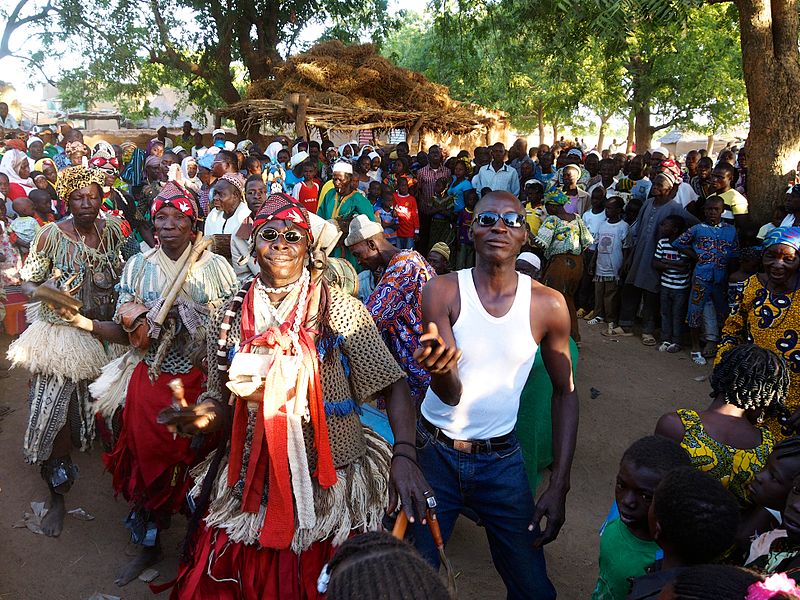
Even today, the Mossi still tend to their traditional beliefs. They name their God Wendé. They believe that their ancestors can influence their fate. This is why a good relationship to the ancestors is very important for the Mossi. No celebration goes by without them commemorating their ancestors and offering them sacrifices. Wooden masks are made for the traditional festivities; they are worn during the dances. The Mossi also celebrate the religious holidays of Islam. After the rainy season, once the crops have been harvested, a magnificent thanksgiving is celebrated on the 11th of December.
Did you know? Burkina Faso is the only country worldwide where the International Women’s Day is a national holiday!
Schools and Education
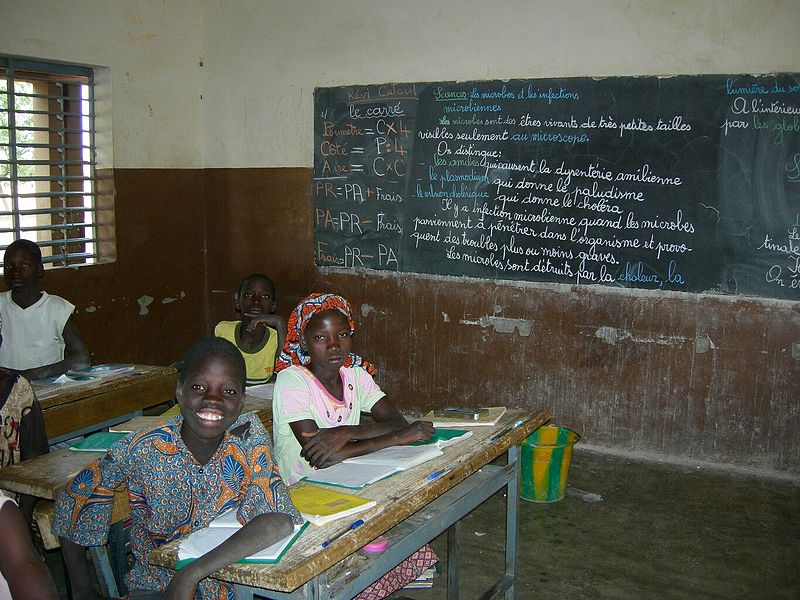
Economy and Natural Resources
Most Burkinabe live of farming. They plant sorghum, a type of wheat, millet, corn and rice. Cotton, peanuts and sesame are cultivated in large plantations and then exported. Burkina Faso has considerable natural resources, nevertheless it belongs to one of the poorest countries in the world. Why? The resources are not mined in a large manor. One of the few exceptions is the mining of gold, which makes up 80 percent of the countries’ exports. More and more people are finding jobs in the mining industry. The crafting industry is quite well developed here though. Unfortunately, the wages are very low. This is why the country still depends on development aid from Europe.
Attractions
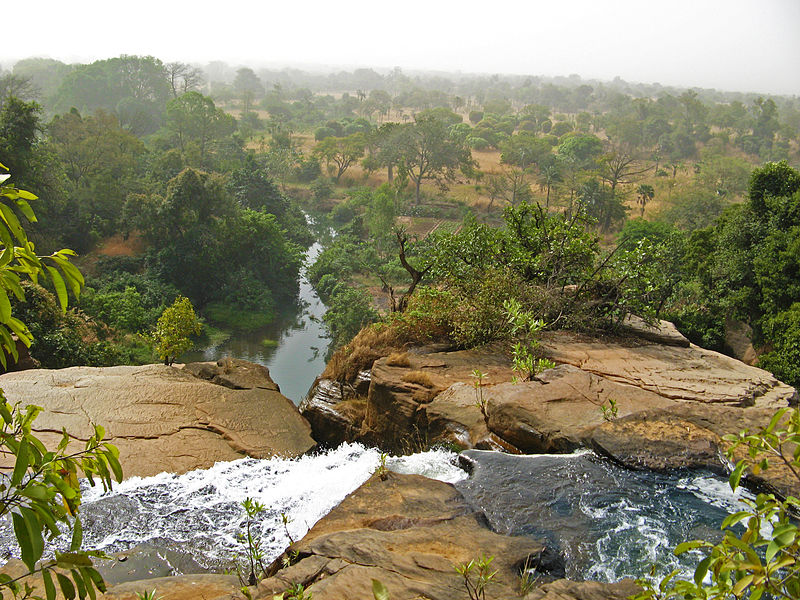 The “Réserve des Cascades de Banfora” is a beautiful nature reserve. You can start a tour to the Banfora waterfalls from here. The river Comoé plunges down the sandstone cliffs into depths. The ruins of Loropéni lie on the border to the Ivory Coast. The ancient stone ruins are believed to be about 1,000 years old. The former fortifications were built by the Kulango. The West African people wanted to join in on the trading of gold in the Sahara. From these fortifications, they controlled the trading caravans that traveled the deserts.
The “Réserve des Cascades de Banfora” is a beautiful nature reserve. You can start a tour to the Banfora waterfalls from here. The river Comoé plunges down the sandstone cliffs into depths. The ruins of Loropéni lie on the border to the Ivory Coast. The ancient stone ruins are believed to be about 1,000 years old. The former fortifications were built by the Kulango. The West African people wanted to join in on the trading of gold in the Sahara. From these fortifications, they controlled the trading caravans that traveled the deserts.
Wildlife
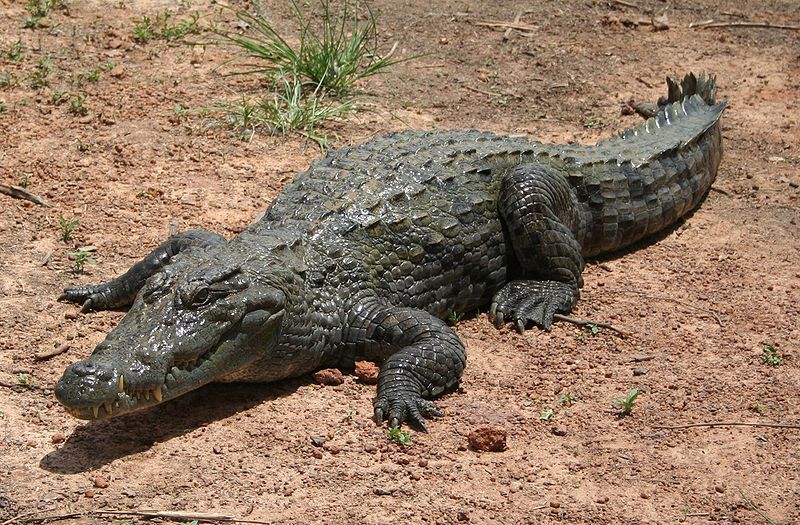
![]() More about animals of the Sahel
More about animals of the Sahel
History
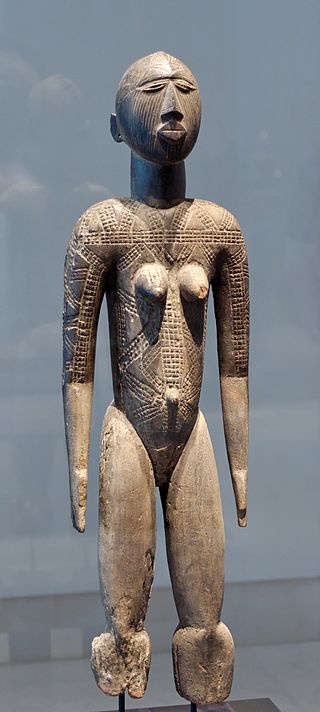 Some regions of the Burkina Faso we know today have been inhabited for a very long time. 400 000-year-old tools prove that the first inhabitants already had diverse skills in handiwork and craftsmanship. Hunters and collectors roamed the northern area about 14 000 years ago. Around 3600 before Christ the first settlements were created here. The inhabitants indulged in agriculture and cattle breeding. They tended to their religious rituals and buried the dead with burial objects. Reports about the first great civilizations are dated back to around 1000 before Christ. This is when the actual history in Burkina Faso began. On the photo to the right you can see an old nuna sculpture.
Some regions of the Burkina Faso we know today have been inhabited for a very long time. 400 000-year-old tools prove that the first inhabitants already had diverse skills in handiwork and craftsmanship. Hunters and collectors roamed the northern area about 14 000 years ago. Around 3600 before Christ the first settlements were created here. The inhabitants indulged in agriculture and cattle breeding. They tended to their religious rituals and buried the dead with burial objects. Reports about the first great civilizations are dated back to around 1000 before Christ. This is when the actual history in Burkina Faso began. On the photo to the right you can see an old nuna sculpture.
Burkina Faso Today
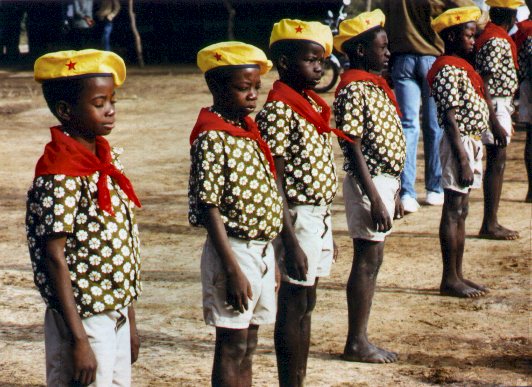
Burkina Faso is one of the most stable countries in West Africa. The liberal attitude of the founding fathers of Burkina Faso is reflected in the name of the country. The “honorable citizens” gave the country a liberal constitution. In 1984, first steps towards equality for women were being initiated. Today, equal rights are guaranteed within the constitution. It will take some time until the women of Burkina Faso are actually equal though. The first step is to improve the girls' education.


